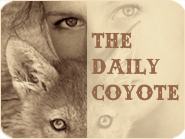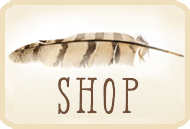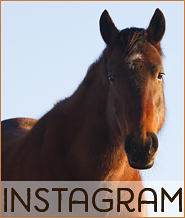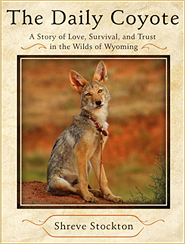Under The Moonlight
On Wednesday, Daisy looked like she was getting very close to calving. I checked on her a dozen times throughout the day; each time, all she wanted was more hay and she didn’t show any of the telltale calving signs – the cocked tail, the mama moo, licking her belly. Mike and I went out to dinner and when we got home, I was ready to crash – I had been getting up at 3 and 4 am all week to catch up on office work – but first I went to check on Daisy one more time. And lo and behold, her tail was cocked, she was licking her belly, and mooing the mama moo. No sleep for me!
It was obviously still very early in the process, so I laid down on Baby who was chewing his cud in the adjoining corral and let her be for about an hour. Towards the end of that time, she lay down and really began to push, but then she stood up again. I went over to check things out, and saw a hoof sticking out (this is normal). But I was looking at the heart-shaped bottom of the hoof rather than the shiny smooth top. It was a backwards calf, again. And my vet was out of town.
I cried. I did. I was just so frustrated and sad and tired of everything being so hard and heartbreaking. The last calf Daisy had was backwards and though it was born alive, it died five days later. And the whole thing was extremely hard on Daisy, physically – it took her over a year to recover and get pregnant again.
I called Mike and by the time he got to the corral, the hoof had receded back into Daisy (this is also normal), so we gave her time alone to walk around and get further into labor while we figured out a plan. Mike has pulled dozens of calves over the years – sometimes a heifer needs assistance with a normal birth or a calf is too large for a cow to do it on her own. But he has always taken backwards calves to the vet because they are potentially fatal for the calf. And my vet happened to be in Colorado.
The danger with a backwards calf is that the head comes out after the umbilical cord breaks – and when that happens, the baby is compelled to take a breath. If it takes a breath while its head is still inside, it will suffocate. When pulling a normal calf, you can take your time throughout the pull (within reason) because the head and front legs come out first. With a backwards calf, you have to power through an already awkward maneuver to get the chest and head out as fast as possible.
Mike did not want to pull this calf. He was so concerned that he would fail and the calf would die, so he started brainstorming this person or that person to call to come do it, until finally I said, “Mike, you know the mechanics by heart. You’re physically in better shape than any of those people. I trust you more than I trust any of them. And I’d rather have something go wrong with you than go wrong with one of them. We’ll do it together, and I believe we can do it.”
And so we went up to Mike’s house to get the calf pulling equipment, which consists of a small chain that loops around the two presenting feet and a large grooved bar that hooks to the chain and braces against the cows hindquarters. Once the chain is attached to the calf’s feet and the bar, you ratchet out the calf. It sounds barbaric, but I think it’s less gnarly than forceps (which happens to be how I was delivered).
While Mike was gathering the gear, I saw the top of the moon peeking up over the mountain. Since Frisco died, I’ve been able to feel him when I see the moon (and only then). As the moon rose into sight, I asked Frisco to please help us. To help the calf, to help Daisy, to help Mike and me.
Back at the barn, we did a dry run with my wrists in the chain to make sure the calf puller was working perfectly. I gave Mike one last pep talk. We put Daisy in the head catch to stabilize her, and got the chains around the calf’s hind legs which were now both visible. Mike started ratcheting, slowly at first and then quickly after the hips, and when the calf’s torso emerged, I grabbed it in a bear hug and pulled hard with Mike and the calf slid out – alive!
We laid her head-down on a slight decline and I immediately suctioned out her nose and mouth. Mike brought over the oxygen tank we keep on hand for emergencies and while I held the oxygen mask over the calf’s nose, Mike let Daisy out of the head catch and she rushed over to lick and lick and moo to her new baby. After a few minutes on oxygen, the calf moved her head away from the mask, clearly done with it and ready to sit up as Daisy licked her dry. Soon, the calf was trying to stand, and licked her lips and the air, ready for a teat. Wobbly, as newborns are, and with extraordinarily long legs, it was a bit tricky for her to grab a teat – she was so tall, and Daisy’s full udder hung so low! With a bit of assistance from Mike and me to guide and stabilize her, she had her first meal at 2am. We all were feeling very happy and ready to rest.
I was still nervous, since Daisy’s last calf was born alive but didn’t make it, but I’m not nervous anymore. Leila (which means night in Arabic) is so full of life! She bucks and hops and races in circles around the corral and runs up to me for for kisses and pets. She’s gorgeous – proper pictures coming soon – and though she appeared pure black when she was wet and slippery, she is actually every color. Her hair is black, gray, silver, brown, and red. She looks like obsidian, like oxidized silver, like moonlight.
« go back







